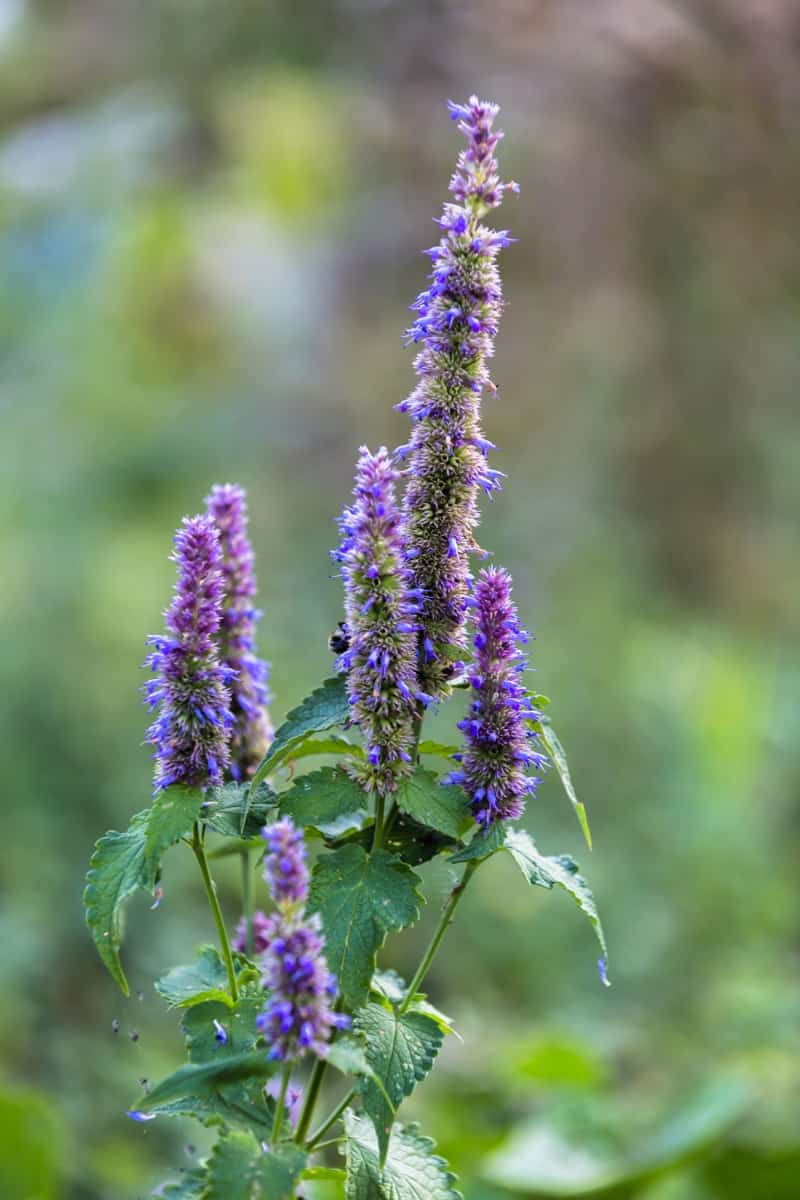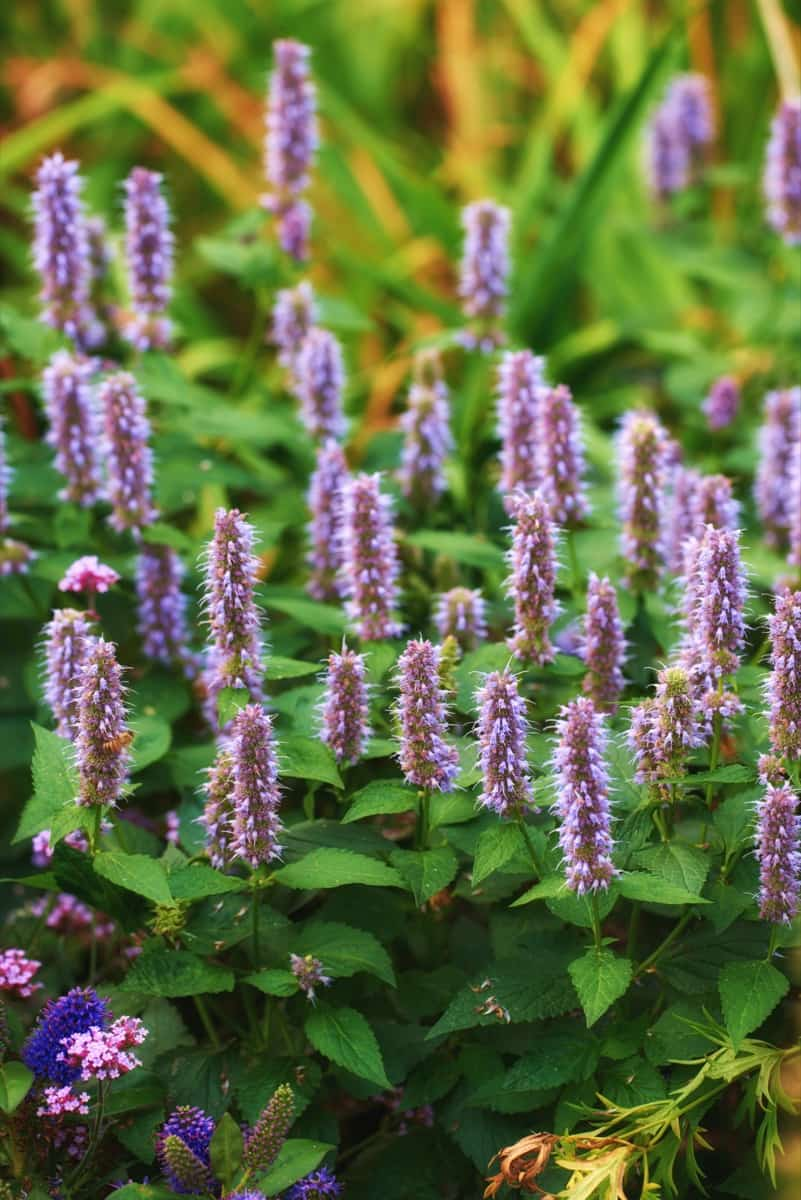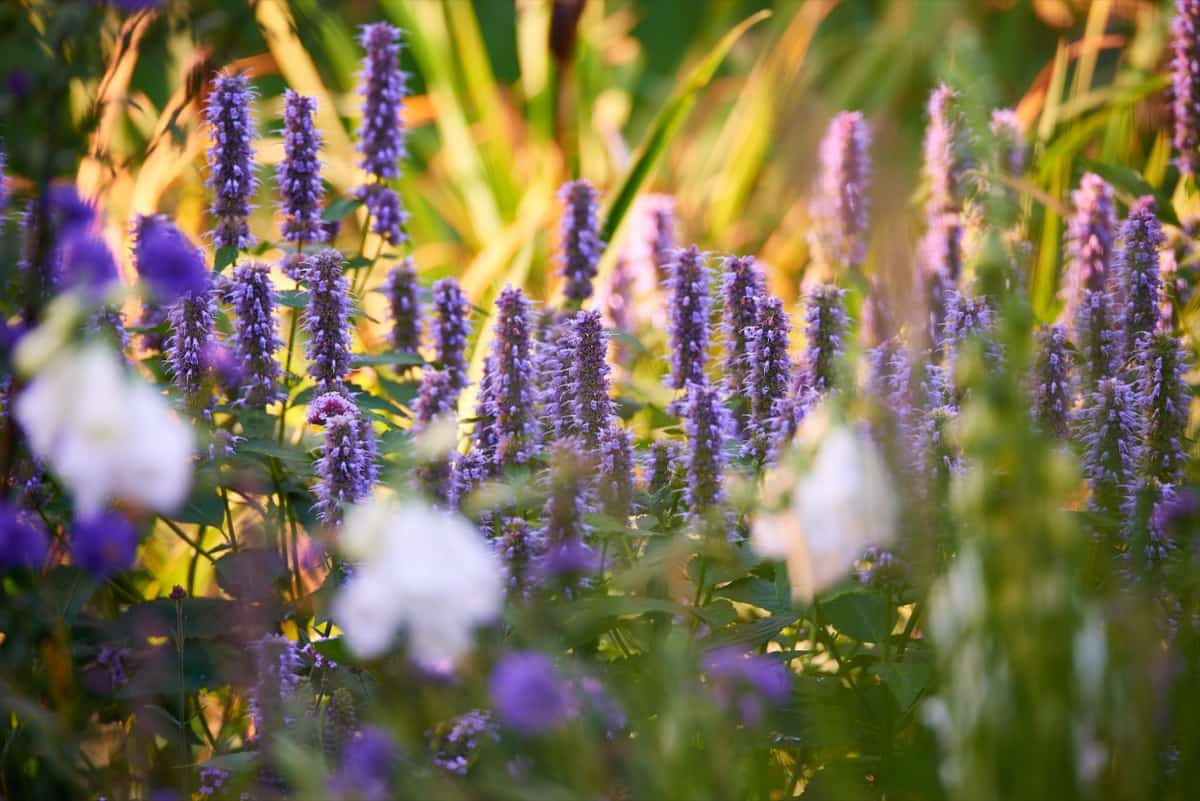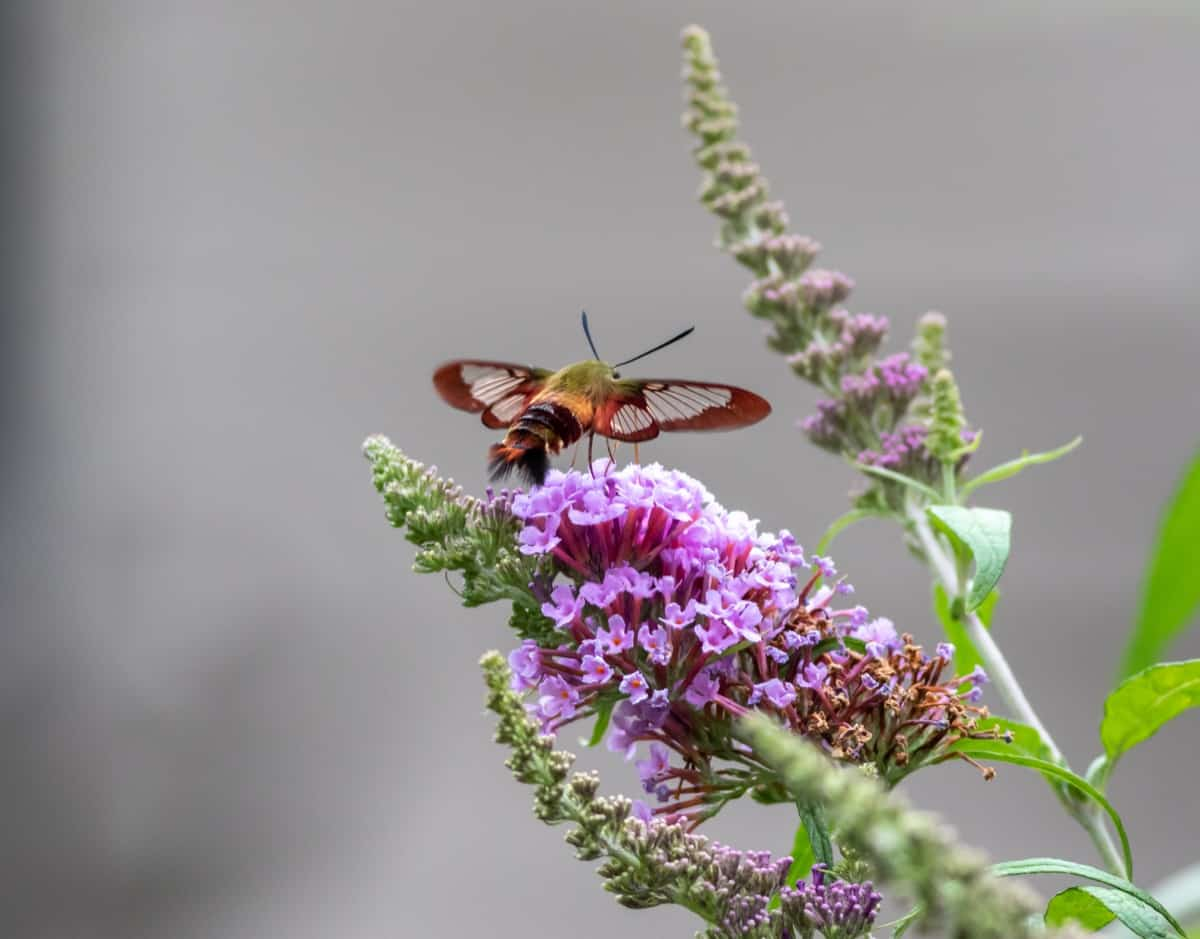Growing and caring for Hyssop can be a rewarding experience for any gardener or herb enthusiast. This versatile plant adds beauty to your garden with its vibrant flowers and offers various health benefits and culinary uses. Following the planting instructions, you can ensure your Hyssop gets a strong start. Understanding the ideal growing conditions and following the proper planting instructions ensures your Hyssop plant thrives.

Remember to provide well-draining soil, ample sunlight, and regular watering to promote healthy growth. Once established, caring for your Hyssop plant involves regular pruning to encourage bushiness and prevent overcrowding. Additionally, be mindful of common pests and diseases that may affect this herb.
How to Grow and Care for Organic Hyssop
Step-by-step Guide on Planting Organic Hyssop
Find a sunny spot in your garden that receives at least six hours of direct sunlight daily. Organic Hyssop thrives in well-draining soil, so ensure the area has good drainage. Before planting, loosen the soil using a garden fork or tiller. Remove any weeds or rocks that may hinder the growth of your Hyssop plants. If you’re starting from seeds, sow them directly into the prepared soil about ¼ inch deep.
Space each seed about 12 inches apart to allow ample room for growth. Gently cover them with soil and lightly pat them down. For transplants, dig holes slightly wider and deeper than their root balls. Place each plant in its hole and backfill with soil, ensuring they are at the same level as in their containers. After planting, thoroughly water your Hyssop plants to help establish their roots.
Water them regularly but avoid overwatering as this can lead to root rot. Aim for moist but not soggy soil conditions. Remember to check on your newly planted Hyssop regularly and provide additional irrigation during dry spells or periods of intense heat. Applying a layer of mulch around your Hyssop plants can help conserve moisture in the soil while suppressing weed growth. Organic options such as straw, shredded leaves, or wood chips work well for this purpose.
Essential Tips for Growing Organic Hyssop at Home
Choose a sunny location for your Hyssop plants. They thrive in full sun and require at least six hours of direct sunlight daily. Ensure the soil is well-draining, as Hyssop does not tolerate wet or waterlogged conditions. Dig a hole slightly large enough to the root ball and place the plant into it. Backfill the hole with soil and firmly press down around the base of the plant to eliminate air pockets. Watering is crucial during the early stages of growth, so keep the soil evenly moist but not overly saturated.
To promote robust growth, consider applying an organic fertilizer specifically formulated for herbs every few weeks during the growing season. This will provide essential nutrients without introducing harmful chemicals into your garden. As with any plant, pest control is important for maintaining healthy Hyssop plants. Instead of relying on synthetic pesticides, which can harm beneficial insects, opt for natural methods such as handpicking pests or using insecticidal soap sprays.
In case you missed it: How to Grow and Care for Organic Epazote: Planting Instructions

Avoid common mistakes such as overwatering or overcrowding your Hyssop plants which can lead to fungal diseases or poor growth. Give each plant enough space for proper air circulation and avoid excessive moisture buildup around their leaves. Hyssop thrives in well-drained loamy soils with a pH between 6.5-7.5 range, providing optimal conditions for nutrient uptake by its roots.
Growing Hyssop in containers
Containers offer flexibility, as you can easily move them around to find the ideal growing conditions for your Hyssop plants. When choosing a container for your Hyssop, opt for one at least 12 inches deep and with good drainage. Hyssop prefers well-draining soil, so using a potting mix specifically designed for herbs is important, or creating your own by mixing equal compost, sand, and perlite.
Place your container in an area that receives full sun for at least six hours daily. Hyssop thrives in warm climates but can tolerate light shade in hotter regions. Water regularly to keep the soil moist but not waterlogged. To ensure healthy growth and abundant blooms, fertilize your container-grown Hyssop every two weeks during the growing season with an organic fertilizer high in nitrogen.
Prune regularly to promote bushier growth and prevent legginess. Remember that containers require more frequent watering than plants grown directly in the ground due to increased exposure to air circulation. Monitor moisture levels closely and adjust watering accordingly.
Growing Hyssop indoors
Hyssop is a versatile herb that can thrive both outdoors and indoors. Growing Hyssop indoors is a great option if you don’t have access to outdoor space or prefer to keep your plants inside. To start growing Hyssop indoors, choose a sunny spot in your home. Hyssop loves sunlight and needs at least six hours of direct light daily. Place the potted Hyssop near a south-facing window or use grow lights if necessary.
When potting soil, ensure it is well-draining, as Hyssop prefers slightly dry conditions. Mix potting soil, sand, and perlite for optimal drainage. Plant the Hyssop seeds or seedlings about 1/4 inch deep in the prepared soil and gently water them. Watering is crucial for indoor Hyssop since they tend to dry out more quickly than their outdoor counterparts. However, you should not give overwater, which can cause root rot. Let the top few inches of soil dry out before watering again.
In case you missed it: How to Grow and Care for Organic Angelica: Planting Instructions

Organic Fertilizer Options for Promoting Hyssop Growth
While synthetic fertilizers may provide a quick boost, they can also harm beneficial organisms in the soil and have long-term negative effects on plant health. One excellent option is compost, which nourishes your plants and improves soil structure and fertility. Compost is rich in nutrients and microbial activity and helps maintain a healthy balance within your garden’s ecosystem.
Another natural choice is worm castings or vermicompost. These nutrient-rich byproducts of earthworms are packed with beneficial microbes that enhance plant growth and protect against disease. Liquid seaweed extract is another fantastic organic fertilizer option worth considering. Adding aged manure to your garden beds can also promote Hyssop growth.
Horse or cow manure that has decomposed over time releases slow-release nutrients into the soil while improving its moisture retention abilities. Always follow package instructions when using any fertilizer and avoid over-application, as it could lead to nutrient imbalances or even burn the roots of your Hyssop plants.
Natural Pest Control Methods for Organic Hyssop Cultivation
One effective method is companion planting. Planting certain herbs and flowers alongside your Hyssop can deter pests naturally. Marigolds emit a scent that repels insects like aphids and nematodes. Additionally, aromatic herbs like lavender or rosemary can mask the scent of Hyssop and confuse pests. Water and dish soap mixture eliminates soft-bodied insects such as aphids or spider mites.
You could also try making a garlic spray by blending garlic cloves with water and straining the mixture before applying it to your Hyssop plants. Encouraging beneficial insects in your garden is another way to combat pests organically. Ladybugs, lacewings, and praying mantises are all predators of common garden pests like aphids or caterpillars.
By providing habitats such as insect hotels or planting nectar-rich flowers nearby, you can attract these helpful bugs to your garden. Regularly inspecting your plants for signs of an infestation is essential in preventing pest outbreaks from spreading throughout your garden. Remove any infected leaves immediately and dispose of them properly to prevent further damage.
In case you missed it: How to Grow and Care for Organic Chervil: Planting Instructions

Common Mistakes to Avoid When Growing Organic Hyssop
Growing organic Hyssop can be a rewarding experience, but it’s important to avoid common mistakes that could hinder its growth and health. One mistake to avoid is planting Hyssop in soil that lacks proper drainage. This herb prefers well-drained soil, so amend the soil with organic matter if necessary.
Additionally, overcrowding the plants can lead to poor air circulation and increased disease risk. Give each plant enough space to grow and spread out. Another common mistake is overwatering Hyssop plants. While they need regular watering, excessive moisture can cause root rot and other fungal diseases. It’s best to water deeply once a week rather than frequent shallow watering.
Neglecting pruning is another error many gardeners make when growing Hyssop. Regularly trimming back, the plants help maintain their shape, encourages new growth, and prevent them from becoming leggy. Using synthetic fertilizers on organic Hyssop goes against its natural principles. Opt for organic fertilizer options instead, such as compost or worm castings.
Optimal Soil Conditions for Planting Organic Hyssop
When planting organic Hyssop, the soil conditions are crucial in ensuring healthy growth and abundant harvests. Optimal soil conditions provide the nutrients and moisture for this aromatic herb to thrive. It is important to choose well-draining soil for your Hyssop plants. This helps prevent waterlogging and root rot, which can harm their overall health.
Sandy or loamy soils are ideal as they allow excess water to drain away easily. Ensure that the soil’s pH level falls between 6.0 to 8.0. Hyssop prefers slightly acidic to neutral soil conditions. You can adjust the pH level by adding organic matter. Furthermore, Hyssop thrives in full sunlight but can also tolerate partial shade.
Therefore, select an area in your garden that receives at least six hours of direct sunlight daily for optimal growth. Additionally, regular weeding is essential to keep competing plants at bay and allow Hyssop roots access to nutrients without any hindrance. Consider mulching around your Hyssop plants with natural materials like straw or wood chips.
In case you missed it: How to Grow and Care for Organic Chives: Planting Instructions

Watering Techniques for Healthy Organic Hyssop Plants
It’s important to understand that Hyssop prefers well-drained soil. Overwatering causes root rot and other issues, so be mindful not to saturate the soil excessively. Aim at the base rather than wetting the foliage when watering your Hyssop plants. This helps prevent diseases caused by excess moisture on leaves and stems.
Additionally, watering in the morning or early afternoon allows any splashed water on foliage to dry before evening—further reducing disease risks. Feel the soil around two inches deep with your finger to determine when it’s time to water again. If it feels dry at this depth, it’s time for another round of watering. However, if it still feels slightly moist or damp, hold off until later.
Organic Companion Plants That Benefit Hyssop Growth
Yarrow plant attracts beneficial insects such as ladybugs and parasitic wasps that prey on pests like aphids and caterpillars, keeping them away from your precious Hyssop. Besides being a flavorful addition to your culinary creations, chives repel pests like aphids while attracting beneficial insects such as hoverflies that feed on harmful pests. With its beautiful blue flowers, borage is not just eye-catching; it also attracts bees and other pollinators that aid in successfully reproducing your Hyssop plants.
Conclusion
Growing and caring for organic Hyssop plants is not as intimidating as it may seem. You can cultivate a thriving Hyssop garden right at home by following the step-by-step instructions, implementing essential tips for growth, providing proper care, and using organic fertilizers. Remember to stay vigilant against pests by utilizing natural pest control methods and avoid common mistakes that could hinder your Hyssop’s growth.
In case you missed it: How to Grow and Care for Organic Chamomile: Planting Instructions

Creating optimal soil conditions and proper watering techniques will promote healthy plant development. With patience and dedication, you’ll soon be able to enjoy the beauty and benefits of vibrant organic Hyssop in your garden.
- How to Grow Hibiscus from Flower
- Plantation Ideas for Home Decoration: A Beginners Guide
- Flower Garden Designs and Layouts for Beginners
- Planting and Spacing Techniques in Papaya: A Beginner’s Guide
- Growing Gold: Essential Techniques for Planting Pineapples
- How to Make Kalanchoe Plant Bushy: Home Remedies and Solutions
- 11 Reasons Why Your Gardenia is Not Blooming: Home Remedies and Solutions
- Eco Elegance: The Guide to Designing a Drought-Tolerant Landscape
- Gardening on a Slope: Strategies for Hillside Landscaping
- Nourish and Flourish: Top Organic Mulches for Thriving House Plants
- Everything You Want to Know about Indian Mogra Flower: Discover Uses and Growing
- Green Thumb Success: Expert Tips for Cultivating Greenhouse Pumpkins All Year Round
- Maximize Growth & Flavor: The Ultimate Guide to Companion Planting in Herb Gardens
- How to Control Rhododendron Problems Naturally: Home Remedies and Organic Ways to Fix Them
- Natural Magic: The Remarkable Benefits of Cinnamon for Plants
- Best Steps to Revive Dying Tulip with Natural and Organic Treatment
- 10 Reasons Why Your Angel Trumpet is Not Blooming: Remedies and Treatment
- How to Fix Periwinkle Leaf and Flower-Related Problems: Natural Remedies and Solutions
- How to Fix Zinnias Leaf and Flower Problems: Discover Natural and Home Remedies
- Organic Steps to Induce Lemon Tree Flowers: A Comprehensive Guide
- Bloom Booster: Crafting the Perfect Homemade Bougainvillea Fertilizer
- Optimizing Growth: A Guide to Applying NPK Fertilizer for Potted Plants
- 10 Best Homemade Fertilizers for Rubber Plant: DIY Recipes and Application Method
- How to Boost Female Pumpkin Flowers: Effective Steps for More Flowers and High Yields
- Transform Your Indoor Garden: Top Benefits of Pink Salt for Houseplants
- 10 Best Homemade Fertilizers for Peacock Plants (Calathea): Easy DIY Guide
- Unlock Blooms: 9 Reasons Why Your Potted Chrysanthemum is Not Blooming
- 8 Reasons Why Your Potted Hibiscus is Not Blooming: Fix it with Simple Solutions
- Unlock Blooms: 9 Key Reasons Your Potted Frangipani Won’t Flower
- 10 Reasons Why Is My Ice Plant Not Blooming: Remedies and Treatment
- 10 Reasons Why My Potted Hydrangea Not Blooming: Treatment and Remedies
- 10 Reasons Why is My Wisteria Not Blooming: Remedies and Treatment
- 10 Reasons Why is My Goldfish Plant Not Blooming: Remedies and Treatment
- Maximize Your Space: Ultimate Guide to Balcony Gardening with Grow Bags
- 10 Reasons Why Your Iris is Not Blooming: Remedies and Treatment
- 10 Reasons Why Your Anthurium Plant is Not Blooming: Treatment and Remedies